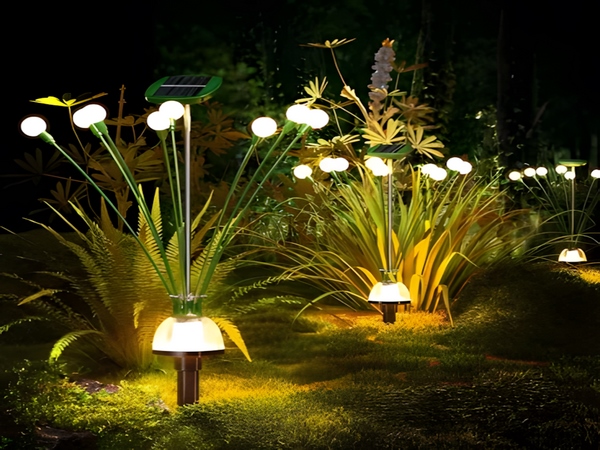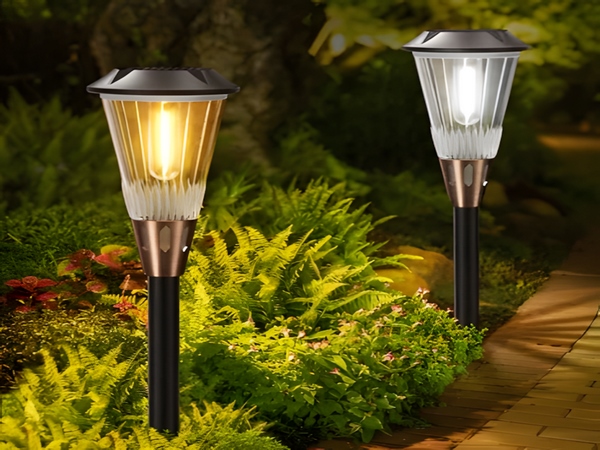
Solar garden lights typically refer to outdoor road lighting fixtures that are less than 6 meters high. They come in various styles such as ground lights, wall lights, lawn lights, spotlights, and water feature lights. Their main applications are for outdoor lighting in public areas like urban slow lanes, narrow roads, residential communities, tourist attractions, parks, and squares.
So, how does the solar garden light landscape showcase its charm at night? The answer is lighting. Therefore, we need to understand the key points of lighting design.
Lighting Design Requirements
1. The style of solar garden lights should match the style of the garden. In case of indecision, simple geometric shapes such as square or rectangular lights are versatile options. Common colors include black, dark gray, and antique bronze, with white being used sparingly.

2. Energy-saving lights, LED lights, metal halide lamps, and high-pressure sodium lamps should be used for warm light sources in garden lighting. Cold light sources or bizarre colored lights are usually not suitable for private gardens. Additionally, to enhance the softness and comfort of the light, floodlights are generally selected. This means the top is covered to prevent direct light from glaring into the eyes.
3. Ensure compliance with lighting standard values in the park, with specific data referring to relevant specifications.
4. Arrange street lights or garden lights appropriately according to the road size. For roads larger than 6m, lights should be symmetrically arranged on both sides or in a zigzag pattern, with a spacing of 15 to 25 meters. For roads smaller than 6m, lights should be arranged on one side, maintaining a distance of 15 to 18 meters.
5. Control the illuminance of garden lights and lawn lights between 15 to 40 LX, keeping the distance between the fixtures and the roadside within 0.3 to 0.5 meters.
6. Design street lights and garden lights with lightning protection, using not less than 25mm × 4mm galvanized flat steel as grounding electrodes, with a grounding resistance within 10 Ω.
7. Underwater lights should operate at 12V voltage and utilize isolation transformers.
8. Buried lights should be fully underground, with a power range of 3W to 12W.
9. Avoid designing step lights.
Design Control Points
1. Use low-power streetlights on main roads in communities, parks, and green spaces. Optimal pole height is 3 to 5 meters, with a pole spacing of 15 to 20 meters to achieve better effects. For higher illumination requirements, multiple lights on each pole can be used.
2. Indicate the waterproof and dustproof ratings of the fixtures.
3. The lighting fixture list should include dimensions, materials, lamp body colors, quantities, compatible light sources, and schematic images.

4. The base design of lamp poles should be reasonable, ensuring that spotlight bases do not accumulate water.
Bitpott Solar garden lights are produced by a professional manufacturer specializing in the research, production, and sales of solar and LED outdoor lighting. With years of production experience and advanced equipment, we guarantee quality, reasonable pricing, and configuration. If you are interested in solar garden lights, please consult us for pricing.
For inquiries about solar garden light prices, please contact our online customer service.
Welcome to order!



